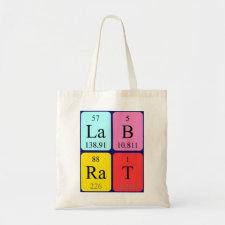
Authors: Zuo HG, Zhu JX, Zhan CR, Shi L, Xing M, Guo P, Ding Y, Yang H
Article Title: Preparation of malathion MIP-SPE and its application in environmental analysis.
Publication date: 2015
Journal: Environmental Monitoring and Assessment
Volume: 187
Issue: (7)
Page numbers: ArticleNo394.
DOI: 10.1007/s10661-015-4641-0
Abstract: Malathion is an organophosphorous insecticide for controlling insects on fruits and vegetables, miscellaneous household insects, and animal parasites. It is important to develop highly efficient and selective pre-treatment method for analyzing malathion residues in environment and samples from agricultural products based on the molecularly imprinted polymers (MIPs). In this study, we developed a tailor-made MIP method with highly specific recognization to the template. The MIPs were prepared using malathion as a template, methacrylic acid (MAA) as a functional monomer, ethylene glycol dimethacrylate (EGDMA) as a crosslinker, azodiisobutyronitrile (AIBN) as an initiator, and the acetonitrile-chloroform (1:1, v/v) as a porogen. The molecular recognization mechanism of malathion and MAA was evaluated by molecular simulation, ultraviolet spectrometry (UV), and 1H-nuclear magnetic resonance (1H-NMR). MAA interacted specifically with malathion by hydrogen bond with a ratio of 2:1. The MIPs exhibit a high affinity, recognition specificity, and efficient adsorption performance for malathion. The Fourier transform infrared spectroscopy (FT-IR), scanning electron microscope (SEM), surface area and porosimeter analyzer, thermogravimetric/differential thermal analyzer (TG/DTA) were used to characterize the properties of MIP. The malathion residues in soil, tap water, and cabbage were cleaned up by MIP-SPE, detected quantitatively using GC-FPD, and confirmed by GC-MS/MS. The limits of tap water, soil, and cabbage were confined to 0.001 mg L-1, 0.004 and 0.004 mg kg-1, respectively. The spiked recoveries of malathion were 96.06-111.49 % (with RSD being 5.7-9.2 %), 98.13-103.83 % (RSD, 3.5-8.7 %), and 84.94-93.69 % (RSD, 4.7-5.8 %) for tap water, soil, and cabbage samples, respectively. Thus, the method developed here can be used effectively in assessing malathion residues in multiple environmental samples. The aim of the study was to provide an efficient, selective, and accurate method for analyzing malathion at trace levels in multiple media
Template and target information: malathion
Author keywords: Malathion, molecularly imprinting polymer, precipitation polymerization, MIP-SPE cartridge, Environmental media



Join the Society for Molecular Imprinting

New items RSS feed
Sign-up for e-mail updates:
Choose between receiving an occasional newsletter or more frequent e-mail alerts.
Click here to go to the sign-up page.
Is your name elemental or peptidic? Enter your name and find out by clicking either of the buttons below!
Other products you may like:
 MIPdatabase
MIPdatabase









